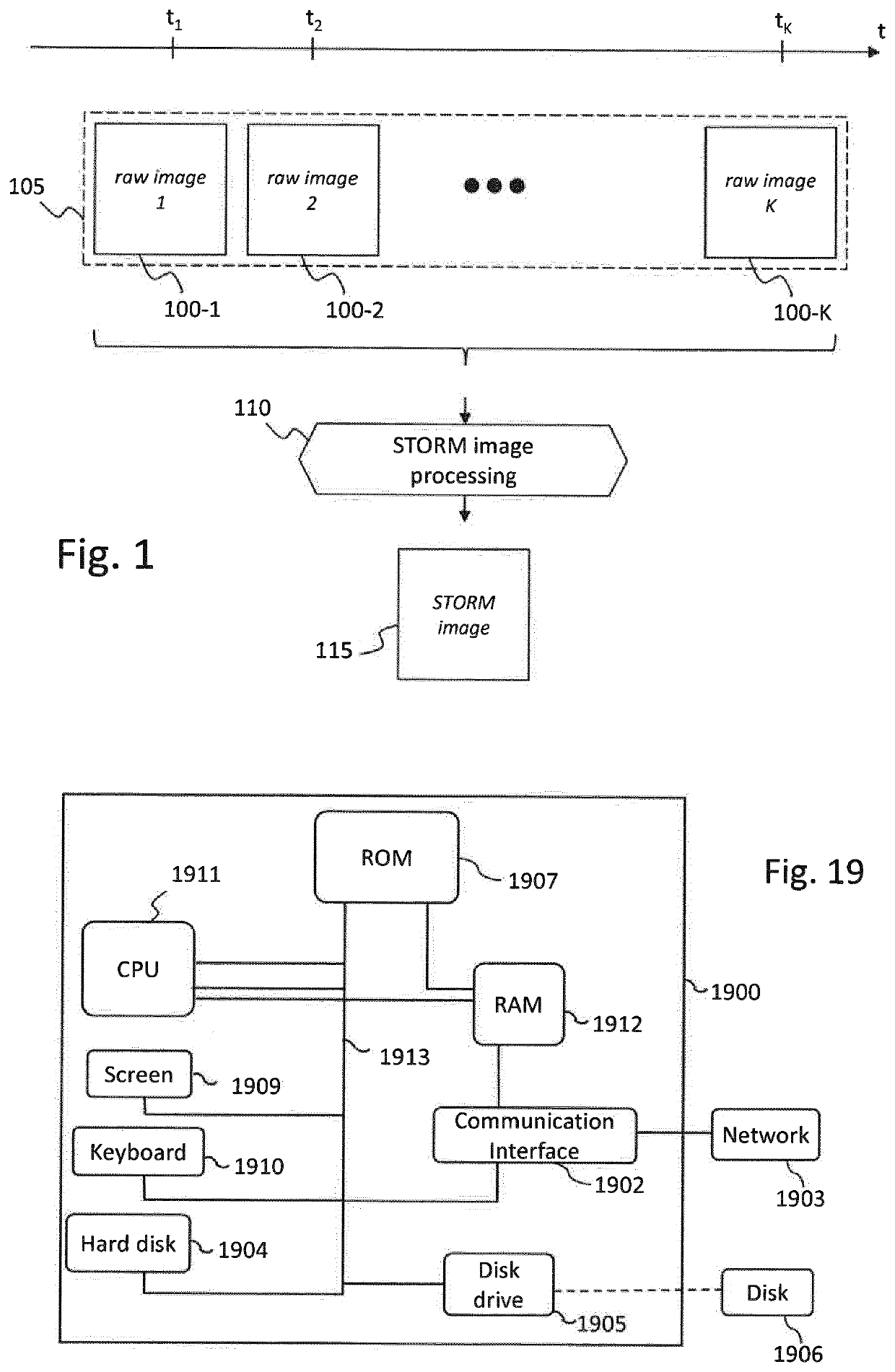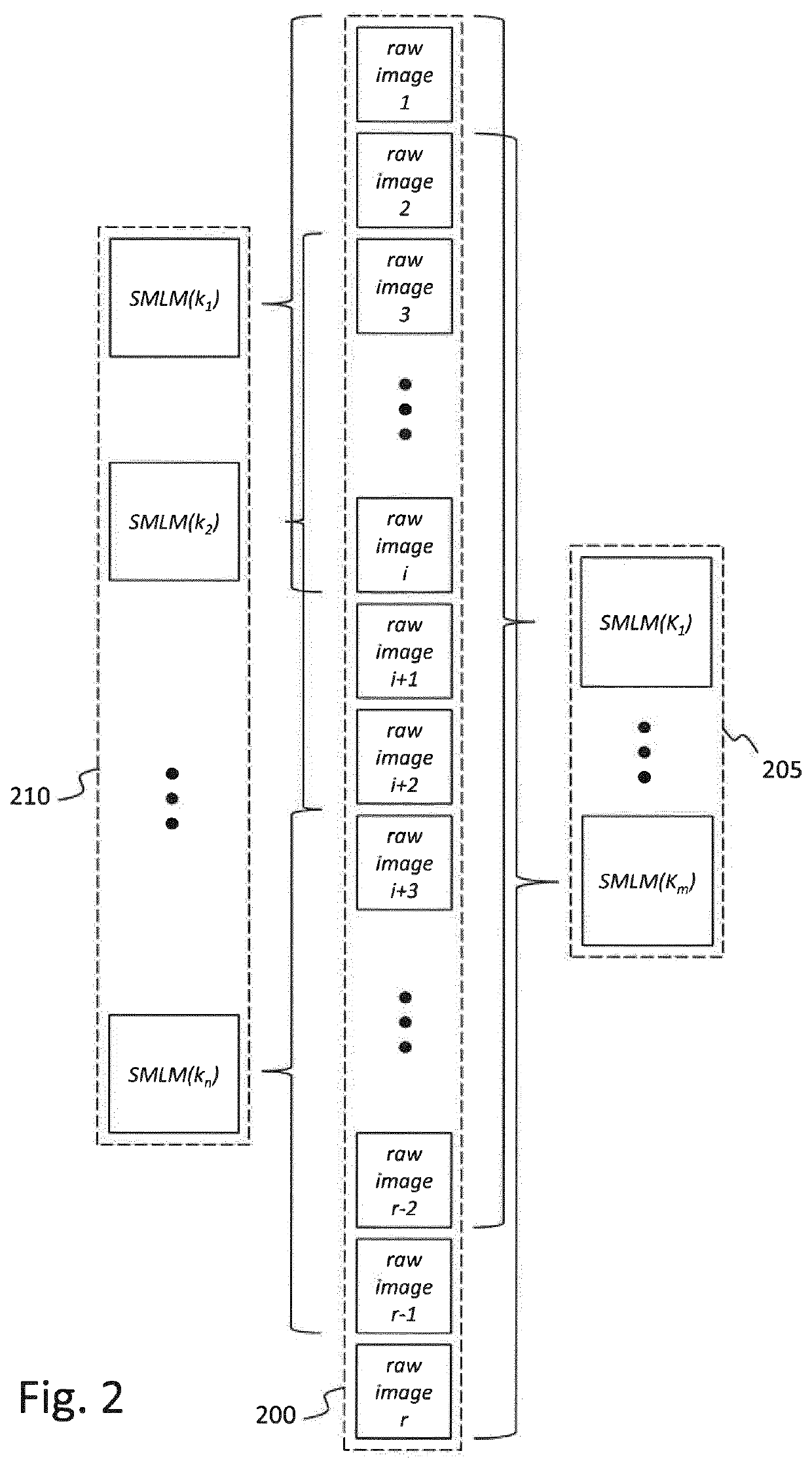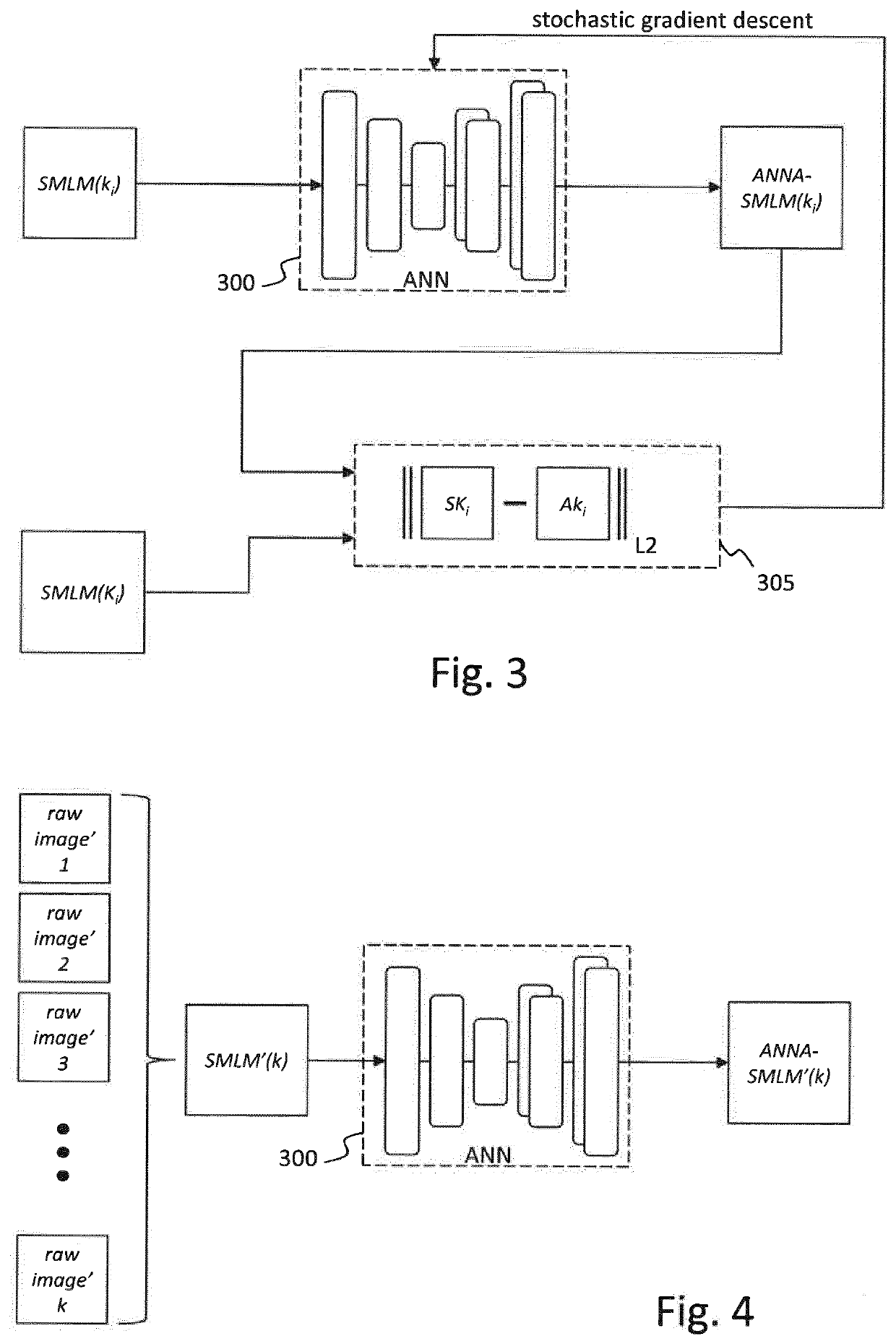Method, device, and computer program for improving the reconstruction of dense super-resolution images from diffraction-limited images acquired by single molecule localization microscopy
a single molecule localization and image technology, applied in the field of microscopy and image processing, can solve the problems of limiting the potential for high-throughput imaging, limiting the number of single molecule localization microscopy studies, and inherently inefficient single molecule localization microscopy and slowness, so as to increase the number and variability of images.
- Summary
- Abstract
- Description
- Claims
- Application Information
AI Technical Summary
Benefits of technology
Problems solved by technology
Method used
Image
Examples
Embodiment Construction
[0102]For the sake of illustration, the following description is based as whole on STORM image processing. However, it is to be understood that the invention applies to other methods for reconstructing dense super-resolution images from diffraction-limited images (also called raw images) acquired by single molecule localization microscopy (SMLM), for example PALM image processing and PAINT imaging. PALM image processing, STORM image processing, and PAINT image processing are generically referred to as single molecule localization microscopy imaging.
[0103]According to embodiments, the total number N of independent fluorophore localizations is reduced, without increasing the number p of activated fluorophore appearing as diffraction-limited fluorescent spots per raw image, thereby reducing the total number K of acquired raw images (K=N / ρ), in comparison to standard single molecule localization microscopy image processing methods.
[0104]Indeed, it has been observed that it is possible t...
PUM
 Login to View More
Login to View More Abstract
Description
Claims
Application Information
 Login to View More
Login to View More - R&D
- Intellectual Property
- Life Sciences
- Materials
- Tech Scout
- Unparalleled Data Quality
- Higher Quality Content
- 60% Fewer Hallucinations
Browse by: Latest US Patents, China's latest patents, Technical Efficacy Thesaurus, Application Domain, Technology Topic, Popular Technical Reports.
© 2025 PatSnap. All rights reserved.Legal|Privacy policy|Modern Slavery Act Transparency Statement|Sitemap|About US| Contact US: help@patsnap.com



